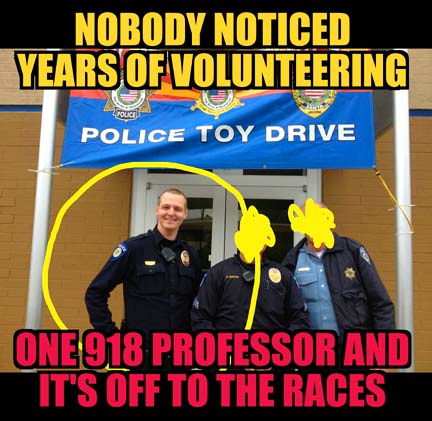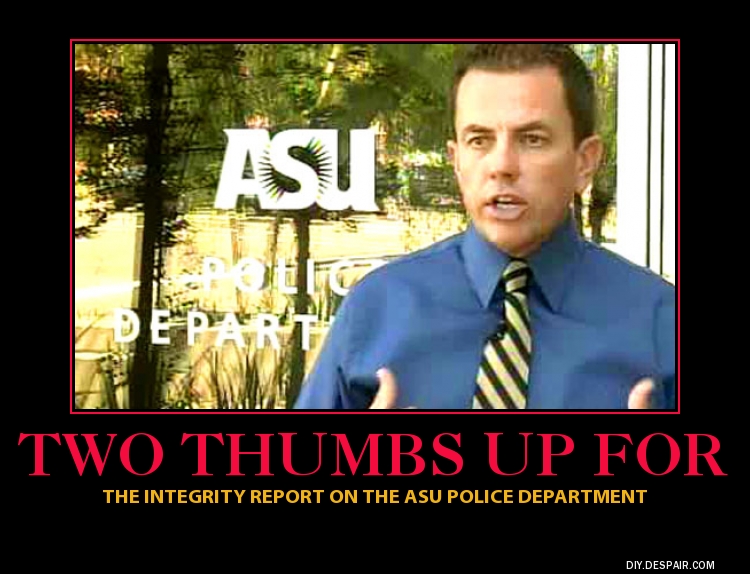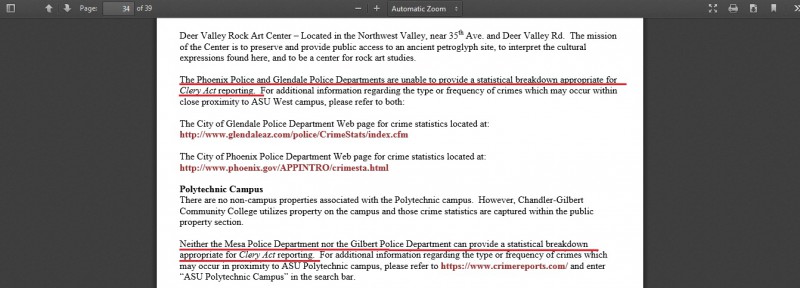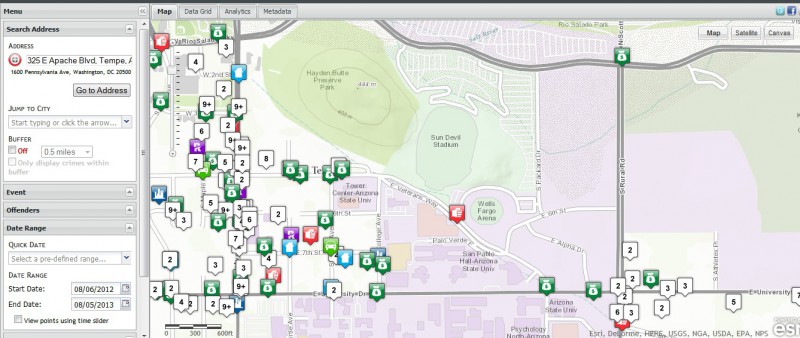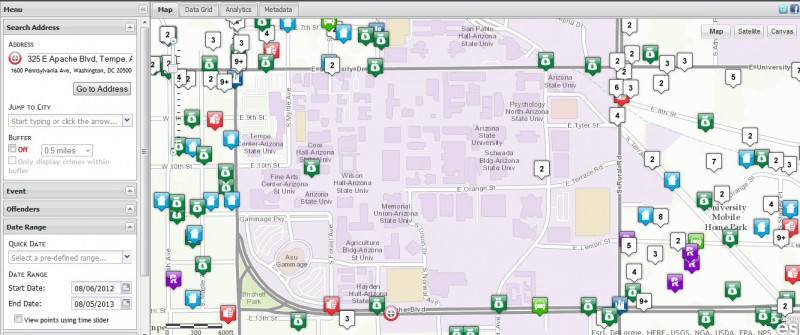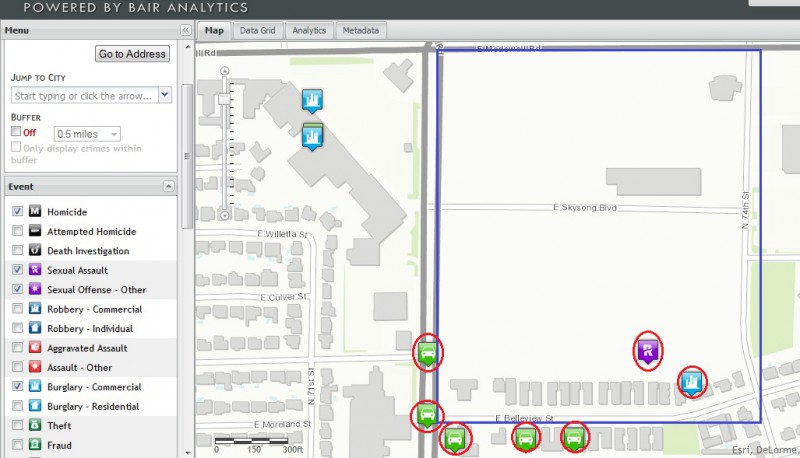We have received a LOT of emails asking about our opinion about the arrest of ASU professor Ersula Ore. We wanted to comment about this situation and also tie it into other issues we’ve previously mentioned on The Integrity Report (to bring the discussion full-circle).
First, we would like to preface this post with the qualifier that none of the writers of the blog were there for the arrest of Ms. Ersula Ore. We have not spoken to the arresting officer nor any other officers involved in this situation; our conclusions come solely from second-hand and media accounts of the situation.
Our blog, The Integrity Report, was created after problems involving accountability and integrity with ASUPD employees began to overshadow the goal of having a safe and secure learning environment. Our mission is to hold officers accountable for their actions which tarnish the oath all of us swore to uphold; we have absolutely NO interest or stake in defending the officer involved in the arrest of Ms. Ore.
That being said, we are pretty perplexed by the statement made by Arizona Critical Ethnic Studies where they state Ms. Ore was racially profiled by ASUPD Officer Ferrin. There was nothing in any part of the initial contact or arrest that was remotely racially based! ACES made the assumption that Ms. Ore was contacted while walking in the City of Tempe only because she was black; what they failed to mention is that Ms. Ore was walking down the middle of the street in a major intersection and the officer contacted her because nearly hit her while responding to a call.
Walking down the middle of the street is behavior that can be indicative of someone in mental distress, under the influence of alcohol/drugs, or possibly suicidal. As first responders, sometimes we don’t have the ability to stop and explain the entire situation with someone if the circumstances are too exigent. This is just common sense! Would you want an officer responding to a burglary call at your house to stop and give you the play by play while the bad guy runs out your back door?
Officer Ferrin reportedly had no intention of citing Ms. Ore for walking in the street (which is against the law!). Ms. Ore repeatedly refused to show her ID multiple times when asked by the responding officer (which she is required to provide under the law). When Officer Ferrin attempted to take Ms. Ore into custody, she began to resist arrest and also attempted to trip the officer by wrapping her leg around him. Once Ms. Ore was taken into custody, the dash cam video clearly shows her kicking Officer Ferrin in the leg.
ACES stated that Ms. Ore’s lower body was exposed during the altercation, but they fail to mention if it occurred while Ms. Ore attempted to trip the officer (something that occurred–her dress flew up–as a result of an action she did–tripping the officer). The fact that Ms. Ore’s lower body was exposed was unfortunate, but certainly not intentional, especially given the fact there were multiple witnesses filming the situation.
If Officer Ferrin was at fault, ASU would throw him under the bus in a heartbeat to preserve their image. Additionally, the officer would be facing administrative punishment or criminal charges, neither of which is occurring at the moment. Is the dash cam video footage shocking? Absolutely. But the untrained observer must realize there is no pretty way to use force on a subject. Unlike the scenarios TV shows and movies portray, there is no “easy” way to take someone into custody that is actively and physically resisting arrest. In this scenario, the force used to affect the arrest certainly appears reasonable given the circumstances of the arrest.
Does ASUPD need a “Use of Force” review panel?
The above scenario involving Officer Ferrin raises the larger issue of reviewing officers’ use of force; are the members of the department that are actually investigating these incidents even qualified to do so? In this circumstance, due to the very sensitive subject matter, ASUPD requested that DPS review Officer Ferrin’s use of force, even after the department found that his use of force was reasonable. DPS undoubtedly has people that are certified defensive tactics instructors that possess the training and experience to review the case with a certain degree of expertise that ASUPD cannot do (We are extremely confident that DPS will also find Officer Ferrin’s use of force was justified, by the way). ASUPD’s Commanders (who would be tasked with an investigation such as this) have NO advanced DT training or certification that would make them qualified to investigate a use of force scenario, period.
How would ASUPD respond to a use of force scenario that was much more muddled than this one (no video or audio)? Or perhaps a scenario in which the responding officer used force, was tried in the court of public opinion, and the university wanted to fire him/her to save face? Better yet, what about an officer who used excessive force and was never reprimanded or investigated? ASUPD’s ability to initiate and investigate use of force scenarios is arbitrary, at best (just like all ASUPD initiated IAs).
The deciding factor in an officer’s fate shouldn’t be left to a supervisor who has little training on the topic of use of force, and who may not be able to review the case without bias due to a preexisting relationship with the officer or external influences. ASUPD should consider establishing a “Use of Force” review panel comprised of DT instructors, some administrators, and possibly a civilian, none of which would have any ties to ASUPD. A review panel is in place at almost every other major law enforcement agency in the valley already! This would serve to vindicate officer’s whose use of force was justified (Officer Ferrin), and punish those who have used excessive force (Corporal Khalid).
Edited to add some links to media coverage of this incident:
http://www.cnn.com/2014/06/30/justice/arizona-jaywalking-arrest/index.html
http://www.azfamily.com/news/ASU-professor-talks-about-arrest-on-CNN-265267761.html

